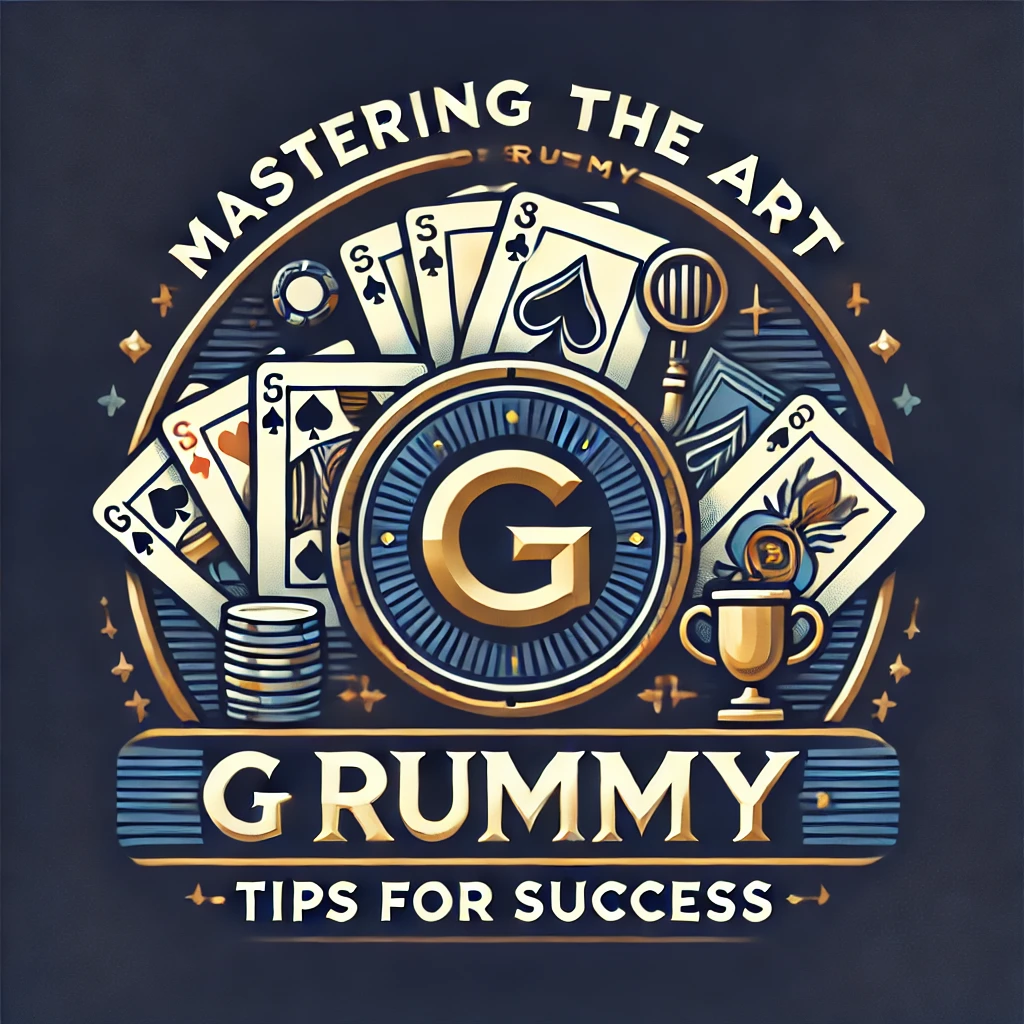Description
Understanding G Rummy: A Complete Guide G Rummy is a well-liked variation of the classic card game Rummy. It usually involves two to six players and is played with a standard deck of cards. Creating legitimate sets and sequences by drawing and discarding cards is the aim of the game. After a predetermined number of cards are dealt to each player, the remaining cards are arranged face down to create a draw pile. To make a discard pile, turn the top card in this pile face up.
In order to combine their cards into legal combinations, players alternately draw cards from the draw or discard pile. The game goes on until a player declares “G Rummy” and wins the round by successfully melding all of their cards. For players who are unfamiliar with G Rummy, it is essential to comprehend the scoring system. The number of cards in the opponents’ hands after one player leaves determines how many points are awarded. Depending on the player’s strategy, Aces can be worth one or eleven points, while face cards (Kings, Queens, and Jacks) are worth ten points each.
Number cards carry their face value. Players must concentrate on forming their own sets as well as minimizing the number of points remaining in their opponents’ hands, which adds another level of difficulty to the game. As players learn more about the intricacies and regulations of G Rummy, they can start formulating winning strategies. Players need to build a well-rounded strategy that includes both offensive and defensive play if they want to succeed in G Rummy.
An efficient strategy starts with knowing the two types of melds that can be created: sequences, which are three or more consecutive cards of the same suit, & sets, which are three or four cards of the same rank. Forming these melds should be the players’ top priority while they watch what their opponents do. Players can learn more about their opponents’ hands and modify their tactics by keeping an eye on which cards are being picked up or discarded. You can concentrate your efforts elsewhere if, for example, your opponent discards a certain suit, which may mean that they are not pursuing that suit for a sequence. Players should think about timing their moves in addition to creating melds. It can be harmful to hold onto some cards for an extended period of time, particularly if they are high-point cards that have the potential to greatly affect the final score.
A winning approach frequently strikes a balance between aggressive play, which involves drawing and melding rapidly, and cautious play, which entails discarding low-value cards while monitoring possible future melds. As the game progresses and their opponents’ moves change, players should also be adaptable in how they approach the game. This flexibility may be essential for outwitting rivals and winning.
In G Rummy, two essential abilities that can greatly improve a player’s performance are observation & memory. Players can make educated decisions about which cards to keep or discard by paying close attention to the cards that have been played and discarded. An opponent may be working toward a sequence in a given suit, for instance, if a player observes that they have been picking up cards from that suit on a regular basis.
Players can modify their tactics to prevent opponents from finishing their melds while working on their own by monitoring these trends. When playing G Rummy, memory is just as crucial. Players need to keep in mind not just the cards they have seen, but also the ones that other players have thrown away. By using this mental tracking, players can determine which cards are likely to be drawn next & which are still in play.
Having a good memory enables players to predict the moves of their opponents & base their strategic choices accordingly. A player can safely discard a card that would otherwise be helpful to an opponent, for example, if they remember that a particular card has already been discarded. Players can improve their performance and raise their chances of success by developing these abilities via experience & practice.
G Rummy takes on an exciting new dimension with wild cards, which give players more chances to create melds. Jokers are wild cards that can be used to replace any other card in a set or sequence in the majority of G Rummy variations. This adaptability can change the game, particularly for players who are having trouble finishing a meld. However, using wild cards strategically is more important than using them on the spur of the moment.
Using a wild card too soon can leave players exposed if they are unable to form other melds, while holding onto it for too long can result in missed opportunities. Players should think about their hands’ overall makeup & the possibility of future melds when using wild cards. For example, utilizing a wild card to finish a set or sequence can help reduce possible losses at the end of the round if a player has multiple high-point cards that are challenging to meld. Players should also be aware of how their use of wild cards might influence the tactics of their rivals.
When an opponent is on the verge of finishing a meld but is missing one important card, playing a wild card could unintentionally help them reach their objective. Wild cards must therefore be carefully considered and strategically planned for when they are used in gameplay. A fundamental aspect of G Rummy, discarding & picking up cards calls for careful planning and strategy.
When discarding cards, players should try to maximize their own chances of forming melds while minimizing the value of the cards they remove. It is usually prudent to discard low-value cards that do not make a substantial contribution to one’s hand because it can be dangerous to discard high-point cards if they could aid an opponent in finishing a set or sequence. Players should also keep an eye on what their rivals are removing from the discard pile, as this can reveal important details about their tactics.
It also takes strategic thinking to select cards from the draw or discard piles. Players should assess how a card fits into their current hand & whether it might help an opponent when deciding whether to remove it from the discard pile. It might be prudent to let go of a card that an opponent has just discarded that could finish their meld rather than take the chance of giving them the advantage. On the other hand, if a player picks up a discarded card and sees a chance to finish a vital meld, they should act quickly. The secret to becoming proficient at picking up and discarding cards in G Rummy is striking a balance between these factors.
Jokers can function as wild cards in meld formation, making them effective tools in G Rummy. Jokers should be strategically placed in players’ hands whenever possible to take advantage of this flexibility. A useful strategy is to use Jokers to finish challenging sets or sequences that would otherwise call for several particular cards. A Joker can be used to fill the gap and produce a legitimate meld, for instance, if a player has two Kings but no third King or other card that could form a sequence with them.
On the other hand, players must exercise caution when using Jokers. Even though Jokers can offer a lot of benefits, relying too much on them can result in missed chances to form other melds with ordinary cards. Players should also be mindful of how their Joker usage may affect the strategies of their opponents; for example, if an opponent notices that a Joker has been used in a specific meld, they may modify their own play accordingly. Consequently, even though jokes can be very helpful in G Rummy, they should only be employed sparingly as a component of a larger strategy rather than as a stand-in.
In G Rummy, identifying patterns is essential for creating winning strategies and predicting the moves of opponents. Players should focus on the sets and sequences that other players at the table are forming in addition to the cards that are being played. Players can make well-informed decisions about which cards to keep or discard by monitoring patterns in their opponents’ gameplay, such as which suits they prefer or which ranks they are collecting.
With this awareness, players can work toward their own objectives & prevent opponents from finishing their melds. Making the most of these trends requires both offensive & defensive tactics. For example, a player may decide to concentrate on finishing melds in the suit that is being discarded if they observe that their opponent is routinely discarding low-value cards from one suit while collecting high-value cards from another. On the other hand, it might be prudent for players to hold onto low-value cards that could break a sequence when discarded later if an opponent looks likely to finish it with high-point cards.
Players can set themselves up for success and reduce the risks associated with opponents’ strategies by remaining aware of these patterns throughout the game. In G Rummy, bluffing is a crucial skill that, when used skillfully, can greatly affect the game’s outcome. The capacity to deceive opponents about one’s hand can hinder their plans and open doors for strategic advantage. When a player discards a seemingly unimportant card that is actually essential to finishing an opponent’s meld, for instance, it could lead to rash decisions based on erroneous assumptions about what the player is holding.
G Rummy bluffing requires players to have strong observational abilities & emotional self-control. Throughout gameplay, they should be aware of both their own movements and the reactions of their opponents; small clues like hesitation or eagerness can give away important details about what other players may be holding. Also, it’s critical to remain composed when bluffing because players may give opponents reason to suspect them if they show signs of anxiety or overconfidence when discarding particular cards.
Bluffing can be successfully incorporated into a player’s overall gameplay strategy by combining strategic deception with attentive observation & emotional control. To sum up, mastering G Rummy necessitates a combination of comprehending its basic rules, creating winning strategies, improving observational abilities, making sensible use of wild cards, & using strategies like bluffing when needed. Players can improve their abilities & raise their chances of winning at the table by concentrating on these elements of gameplay and consistently honing their strategy via practice and experience.


